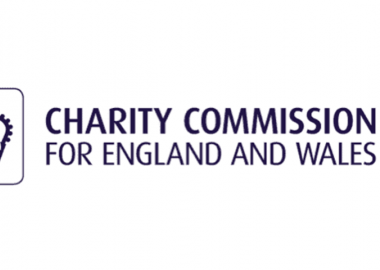The Making Music model constitution, or legal governing document, has been developed with the Charity Commission for England and Wales and is designed specifically to give a legal framework to leisure-time music groups that run as a charity.
The Office of Scottish Charites Register (OSCR) has also approved our constitution for use by Scottish charities. If you are a based in Northern Ireland, please contact the Making Music office for more information on using our model constitution.
The model constitution was originally approved in 2015 and updated in October 2021.
This resource page is for groups who are not currently using our model constitution and want to find out more. It has:
- advice on who can use our model constitution
- notes on how to use it
- a downloadable version of our model constitution in PDF format.
| If your group is already using the model and you want to find out about the October 2021 updates, please see our separate resource specifically about updates. |
Contents
What is a constitution?
A constitution, also called a governing document, is a legal document that establishes what sort of organisation your charity is, and acts as a rulebook to help you run your charity.
Specifically it sets out:
- The charity’s purposes (‘objects’)
- Who can be a member, and how the membership is managed
- Who runs the charity
- How to recruit and elect trustees
- Rules about paying trustees
- What trustees can do to carry out the charity’s purposes (‘powers’), such as borrowing money
- How trustee meetings will be held
- How decisions should be taken
- How to look after your charity’s money, land, property or investments and keep accounts
- How the governing document can be changed
- How to close the charity
A constitution should set out the general framework and principles of how you will run your charity. However, it should not go into specific detail about how your group is run. A good way to look at it is that it should be high level enough to be able to be used by a similar charity to set out their governance and structure.
However, we do realise documenting specific details relating to your group is important. See the ‘Separate rules and regulation documents’ section below to find out more about how to do this.
Using our model constitution
The Making Music model constitution can be used by groups in England, Wales or Scotland who want to be a charity. If you are a based in Northern Ireland, please contact the Making Music office for more information on using our model constitution. There are a number of different charity structures:
- Unincorporated associations
- Charitable incorporated organisation (CIO or SCIO (Scotland))
- Charitable company (limited by guarantee)
- Trust
Our model is only for use by unincorporated associations. This is the structure most Making Music members fall under. Our model will put your group on solid footing in terms of charity structure, regulation and governance for this type of structure, and will be hugely valuable in helping you run your group.
If you are not sure about your group’s charitable status, what an unincorporated associations association is, or what the right options is for your group then read our Choosing a structure for your group resource before deciding to use our model constitution.
Adopting the model constitution
If you adopt our model constitution you will become a charitable unincorporated association. The act of adopting it establishes you as a charity and:
- if you are based in England and Wales and your income is over £5,000 per year then you must also register as a charity with the Charity Commission (if your income is under £5,000 you cannot register but are still a charitable organisation.
- iIf you are based in Scotland, you must register as a charity with OSCR regardless of income.
We have a Charity registration service to help you register (see below)
If your group doesn’t already have a constitution then the act of adopting ours is pretty simple. It just involves the group of people who will be running the chairty (see trustees below) agreeing to use the constitution and signing and dating it. You sould consult with your members – but ultimately it is the trustees agreeing, signing and dating it that means it is adopted (this is not the case for a CIO or Charitable company – see Choosing a structure for your group for more info).
Adopting it is different to registering with a regulator – see Charity registration service below for more information on registering.
If your group already has a constitution and you want to adopt our model, the process will depend on your current charitable status and existing constitution. Contact us to find out more.
How to use our model; Our model constitution has been developed with the Charity Commission and is designed to be used exactly as it is. You should not make any alterations, additions or deletions. The only exception to this is:
- Clause 1 (Name) – where you enter the name of your charity
- Clause 2 (Objects) - where you can choose an additional second object
- Clause 13 (Finance) - where you put in your financial year end. There are further notes on this in the model below.
Why must you use it as it is?
It is a Charity Commission and OSCR approved document and so is a robust and solid governing document that will stand your group in excellent stead when it comes to matters of charity regulation. Changing the document will jeopardise this. Using our model will also make registering as a charity simpler (see Charity Registration service below).
Key criteria
Whilst all the clauses in the constitution are important in running your group there are three key clauses that are the essence of charitable status:
- Clause 1 – Objects: the society is set up for charitable purposes and for the benefit of the public
- Clause 13 – Finance: how the charities money should be applied. The key point here is that the charity is a not for profit organisation and all income should be applied solely to achieving its charitable objectives.
- Clause 19 – Dissolution: this is related to the application of income and sets out that on winding-up of the society any assets shall be transferred to charitable institutions with similar aims.
Trustees
Another key aspect of any charity is management structure – the people responsible for running the charity. These are the trustees and should be elected by the membership. The important thing to understand about trustees is that all committee members are trustees and all trustees are committee members. Without wanting to labour the point - it is not just officers on the committee (e.g. Chair, Secretary etc.) who are trustees - it is all committee members. There is no exception to this or way around it – it is a Charity regulatory requirement
The trustees are responsible for the running and overall direction of the charity. They should ensure that it is being well run, delivering its charitable objects for public benefit and that income is being used correctly (i.e. to promote and meet the objects).
Our model constitution includes rules about who can be a trustee and how trustees should be elected and there are links below to further information about being a trustee.
A separate ‘rules and regulation document’
We do appreciate that all music groups are different and have their own ways of doing things that are important to them. A constitution is not the right place for these sorts of specific details and if you are using our model, you should not change anything.
Instead we recommend having a separate rules and regulation document (this could also be known as a Members Handbook) to go along side your constitution (see Clause 12 (Rules) in our model constitution).
This can set out the particular rules of your group and could expand on some of the constitution clauses. A big advantage of a separate rules and regulation document is that it can be easily changed by the committee, unlike amending the constitution which requires a member vote at an AGM/SGM. By keeping the specifics out of the constitution and including them in a rules and regulation’ document, you have more flexibility in the day-to-day running and administration of your group.
The important thing to remember is that your separate rules and regulation document should not contradict anything in your constitution, as the constitution is the legal governing document. But it can add operational details to expand on what is in the constitution. A rules and regulation document could (but doesn’t have to) include things like:
- Membership admission and termination rules
- Subscription fees and other payments to be made by members
- What members can expect as part of their membership
- What is expected of members (e.g. rehearsal rules, timekeeping, concert dress, absence or illness policies etc.)
- A code of conduct – how members should behave towards one another
- Details of any instrument/property loan between the society and its members
- Rules about borrowing music for practice
- How the group’s property and premises are to be used
- Expanding on the specific aims and objectives of the society
- Expanding on the specifics of how income is to be used.
- Rules around the trustee election process
- How the committee will communicate with the membership
- Mechanisms for the membership communicating with the committee – including committee contact details
- Policies for safeguarding, volunteer management, health and safety
- Rules about how, how often and by whom the rules and regulation document will be updated
- Where the document, and any changes made, can be found and/or will be disseminated.
In the model constitution below you will see notes providing further explanation on various clauses as well as suggestions of where clauses could be expanded on in a separate rules and regulationr document
Charity Registration Service
After adopting our model constitution, you might also need also register as a charity.
We have a registration service that can help. We ask you for some basic information about your group and then compile and submit the application for you.
Charity commission (England and Wales)
- If your income is over £5k/year you must register
- Your application will be fast tracked if you use the model constitution
- You get a cheaper rate for using our service
- You must register regardless of income
- Your application will not be fast tracked if you use the model constitution but the process will be simpler
- You get a cheaper rate for using our service
Find out more about the registration service.
Download the model constitution
Our downloadable document includes the constitution in full and has some notes on specific clauses.
Download the model constitution (PDF)
Download the model constitution (Word)
Useful links
- See the Making Music Committee toolkit for our full range of guidance on running a charity.
- See the Making Music Choosing a structure for you group resource if you want to find out more about charitable status and organisational structures.
- OSCR guidance and forms
- Charity Commission Guidance: The essential trustee: what you need to know (CC3)
We hope you find this Making Music resource useful. If you have any comments or suggestions about the guidance please contact us. Whilst every effort is made to ensure that the content of this guidance is accurate and up to date, Making Music do not warrant, nor accept any liability or responsibility for the completeness or accuracy of the content, or for any loss which may arise from reliance on the information contained in it.









